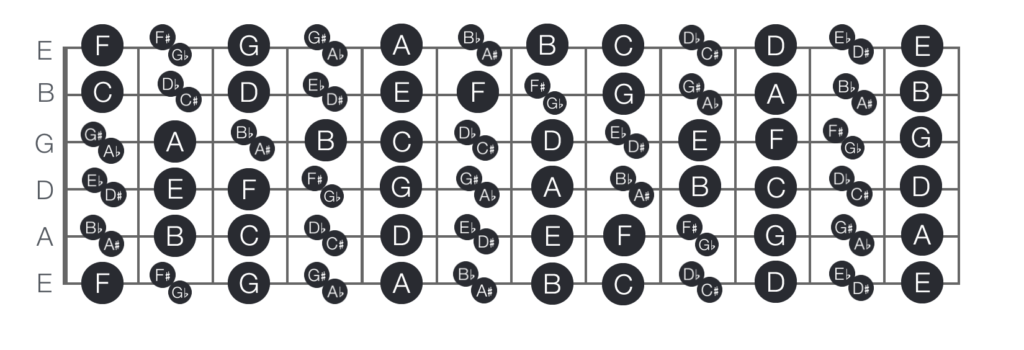


I will be using a lower case “b” in my text to indicate flats. (#)Ī flat lowers the natural note by a half step. I will be using the number sign to indicate sharps in my text. Sharps and FlatsĪ sharp raises a natural note by a half step (1 fret). After learning the natural notes on the 3rd and 4th string, do the same on the 2nd and 1st. Go through the same process as the 4th string. The higher fret markers are equivalent to the lower ones just an octave higher (15=3, 17=5, 19=7, 21=9 ) Natural Notes on the 3rd String of the Bassīelow is a chart of all of the natural notes on the 3rd string of the bass. Beyond the 12th fret the names of the notes just repeat. At the 12th fret, the note is the same as the open string only sounds higher. play E F G E G F G A F A B F G B C etc…) If you do this a little each day, you can learn the notes on the neck quickly.Īlso notice where the notes are in relation to the fret markers (usually at the frets 3, 5, 7, 9 and 12 also 15, 17, 19, 21). The best way to memorize the natural notes on any string is to start out just playing (and naming) a few notes and progressively adding 1 note at a time. With this information you can find any note on the neck of the bass, as long as you know the names of the open strings that you have already learned.( 4th=E, 3rd=A, 2nd=D, 1st=G) Natural Notes on the 4th String of the Bassīelow is a chart of all of the natural notes on the 4th string of the bass. (This is not something that Barney teaches) Once you reach G in the musical alphabet, you start over again with A. Most people have a little trouble with the backwards part. *Although it may seem stupid, make sure you know the 1st 7 letters in the alphabet forwards and backwards easily. It’s just that the 4th and 3rd strings are more important at first.Īll natural notes (A B C D E F G) are a whole step (2 frets) apart, except between E-F and B-C which are a half step (1 fret) apart. That’s not to say that the 1st and 2nd strings are not important. The notes on these string be will be your anchor for many different common scale and arpeggio shapes you will need to create bass lines. The 4th string is the lowest sound string (closest to the ceiling), and the 1st string is the highest sounding string (closest to the floor).Ĥth=E, 3rd=A, 2nd=D, 1st=G Notes on the 4th & 3rd Strings of the BassĪfter the open strings, the next step is to learn the names of the natural notes on the 4th and 3rd strings. The first notes you want to get to know on the bass are the open strings.


 0 kommentar(er)
0 kommentar(er)
